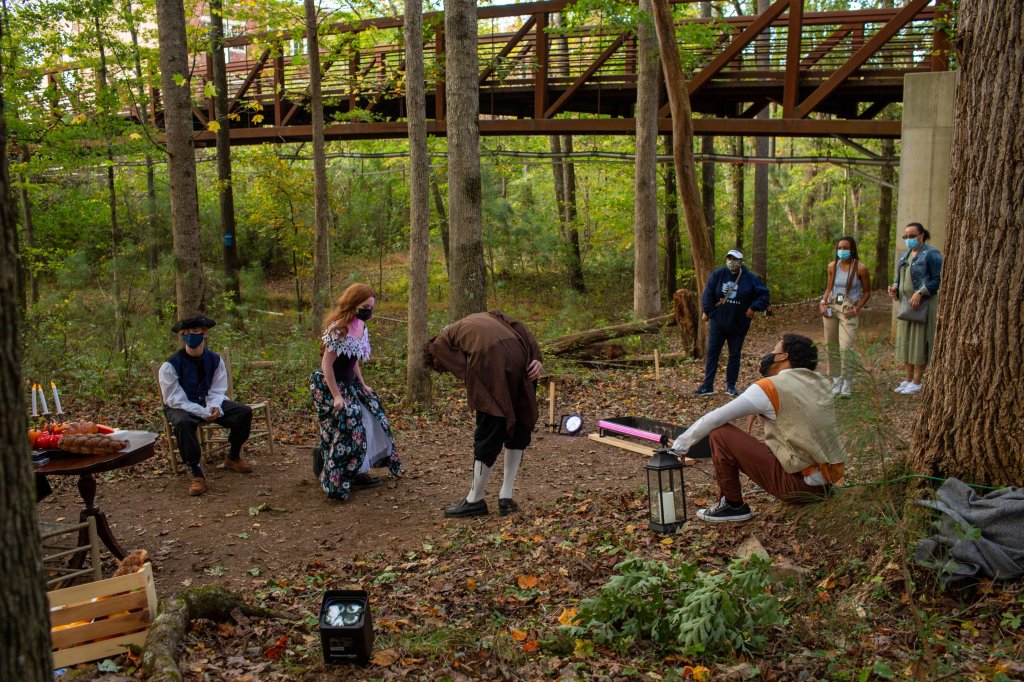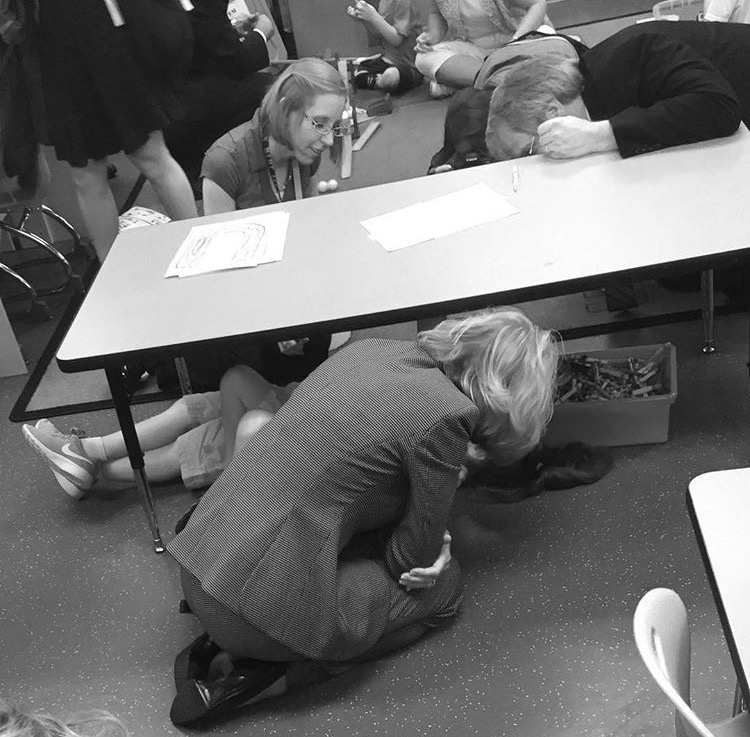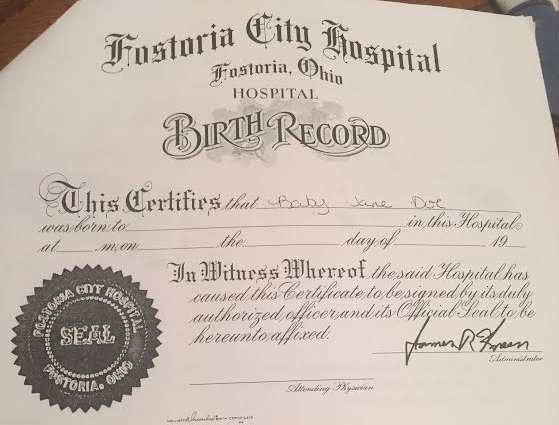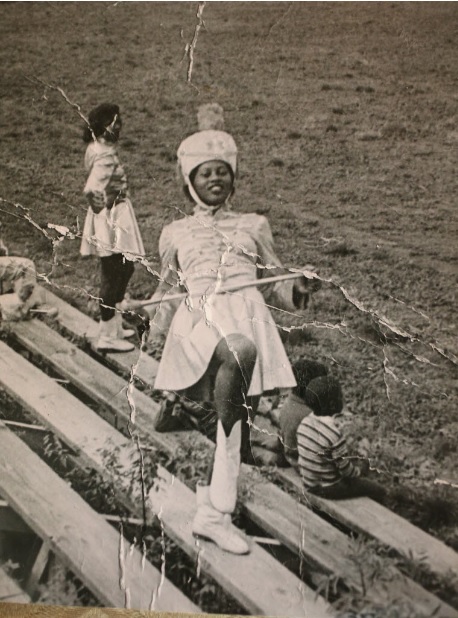On March 11, 2020, my living room turned into a newsroom of one. School board meetings moved online. Phone calls and emails replaced visits with sources and fellow reporters.
As I thought about how to cover schools during a pandemic, I took a particular interest in showing how students, parents and teachers have adapted. Here are a few of those stories:
‘Bitmoji whisperer’: Metro Atlanta teachers recreate classrooms online

Many of Tiffany Lester’s students at DeKalb PATH Academy will meet their science teacher when school starts online Monday.
They won’t spot her purple hair from down the hallway. Her therapy dog, Gary Fishlegs, won’t wander around the classroom like he usually does, seeking out the kids having a bad day so he can offer furry comfort from a cozy couch.
Instead, Lester and her fifth graders will be separated by computer screens.
That’s why she built a virtual classroom.
Lester is one of a host of teachers to create elaborate and interactive online classrooms complete with desks, book shelves and personalized avatars. (The cartoon version of Lester also sports purple hair. Gary gets his own room.)
Read more here.
Atlanta teachers improvise to take gym class virtual

In her Marietta garage with a green backdrop and a tripod, Jen Hagerty records the exercises she shares with her students during virtual physical education classes.
In his family’s Atlanta basement, fifth-grader Oli Hoelker watches online while playing the new games created by Hagerty, his Springdale Park Elementary School teacher.
Atlanta school buildings closed in March amid the coronavirus pandemic. So did their gymnasiums. Physical education classes, just like math and reading, moved to living rooms and laundry rooms, bedrooms and backyards.
For Oli, and his twin siblings Elsie and Henry in second grade, it’s one of the best parts of the at-home school day.
Read more here.
Prom loss breaks seniors’ hearts, some metro Atlanta businesses’ bank accounts

It’s one of the surest signs of spring in the South, right up there with blooming azaleas and the first clicks of the air conditioner.
Prom season, that sentimental high school sendoff, sweeps across metro Atlanta, leaving a trail of sequins and cherished (or cringeworthy) memories and boosting the bank accounts of dressmakers, florists, photographers, hair stylists and chauffeurs.
But in the age of the coronavirus, dance floors are deserted, limos are empty and gowns hang unworn in girls’ closets.
Instagram, usually jammed with posts of couples posing in scenic spots, is full of tributes to an abridged senior year cut short before the glitzy exclamation mark, the rite of passage that, cliched or not, ends every high school movie.
For the class of 2020, and the massive prom industry that makes money off those priceless moments, it’s a devastating loss.
Read more here.
Metro Atlanta high school theater programs improvise during pandemic

Cory Kelley came to Cambridge High School this fall as the new theater director, intent on growing the program and creating memorable shows.
But because of the pandemic, high school theater troupes across metro Atlanta must find new ways to give students a chance to perform.
“This is what they do, and they haven’t been able to do it for months,” the Fulton County teacher said.
They’re staging shows online and outside, in masks and face shields, with smaller casts and bigger precautions. They’re building extra time into rehearsals in case schools shut down and watching budgets carefully.
Read more here.
Metro Atlanta students capture pandemic life in yearbooks

The yearbook staff at Milton High School already faced a monumental undertaking to document their school’s 100th anniversary.
Each year, students create a thick, photo-filled keepsake, and the centennial added historical heft to the task.
When the coronavirus hit, the job became tougher and the stakes got higher.
“In my opinion, this is our most important book we’ve ever made,” said Ben Williams, a senior and the yearbook’s head editor.
He and other staffers want to show what the 2020-2021 school year looked like, through the lens of a pandemic. Here’s the struggle: Much of it isn’t happening at school.
Read more here.
Atlanta parents turn to pandemic pods to help with at-home learning

The thump of a basketball echoed from an Atlanta backyard where four classmates had just enough time before their next online lesson to shoot some hoops.
It was late morning during David T. Howard Middle School’s first week of virtual learning. Ashli Colbert watched the group of eighth grade boys from the kitchen door and kept her eye on the clock. She needed to make sure all four students she’s paid to supervise were logged in on time so they wouldn’t be marked absent.
“All right guys, time’s up,” she shouted. The boys settled around a big wooden table, staring at their laptops, listening to their teachers.
Welcome to the 2020 schoolhouse, emphasis on house.
As hundreds of thousands of metro Atlanta students return to online school amid the coronavirus pandemic, families are forming small learning pods and hiring private tutors and teachers to help out at home.
Read more here.






















